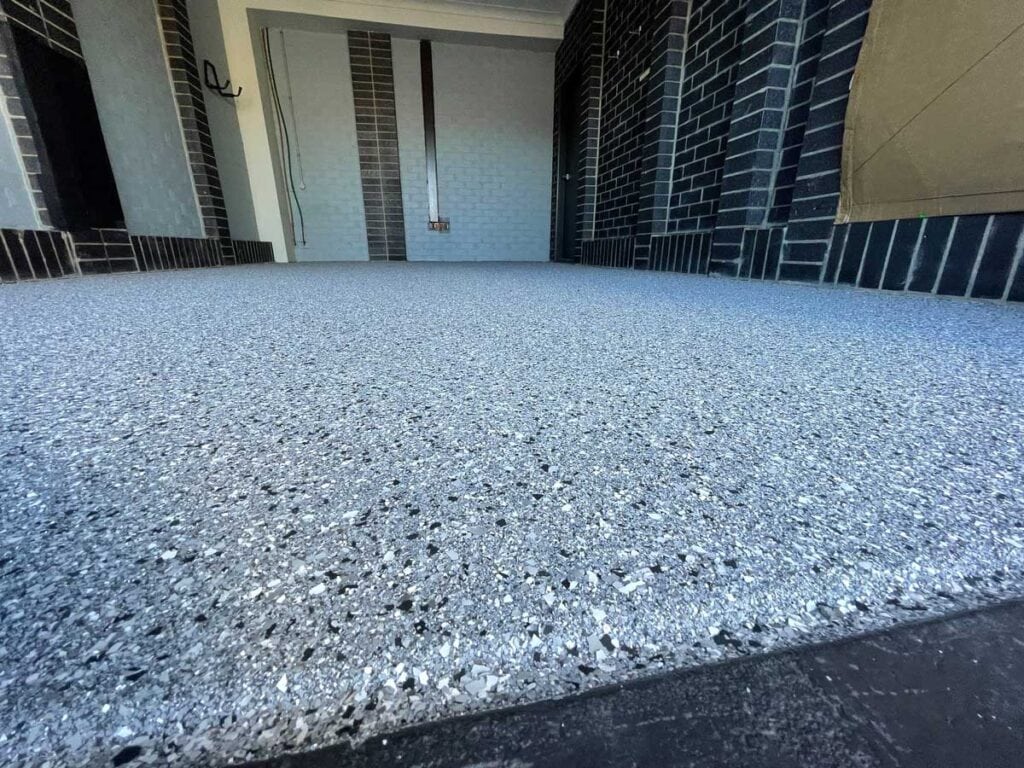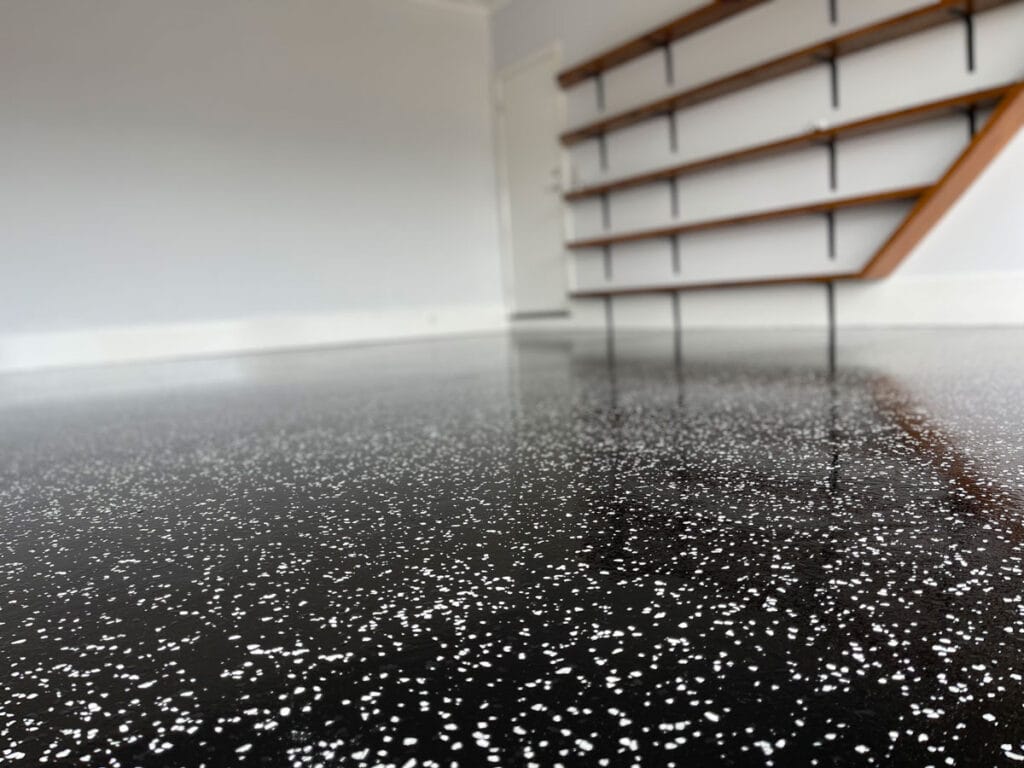Not all tiles are equal, although they may seem similar at first glance. When choosing tiles for a specific application, it's important to consider various factors that set them apart.
In general, tiles are durable materials that can be arranged in rows on surfaces. While some people may use luxurious materials like solid gold or broken seashells in kitchens and bathrooms, the most common tiles are stone, ceramic, porcelain, and glass. These materials offer beauty, strength, and various shapes and colours.
Tiles are typically composed of clay, minerals, and solvents. They undergo a process of shaping, sizing, and high-temperature heating. At this stage, tiles can be considered finished without glaze or decoration.
Unglazed tiles, while possessing a rustic charm, are highly porous. As a result, they are not recommended for areas prone to spills, such as kitchens, as they can absorb liquids easily.
With the many tile options available, selecting the perfect one may seem overwhelming. To assist you in making an informed choice, we have compiled essential information to help you identify the most suitable options. It's crucial to remember that not all tiles are the same, and careful consideration should be given to the intended application.
Choosing the Right Tile
Creating aesthetically pleasing spaces that align with your style and provide a sense of fulfilment holds significant value for individuals. Whether it's the interior or exterior of a space, one crucial aspect to consider is the walls and floors, which play pivotal roles in the overall design. Materials, colours, textures, and patterns are abundant regarding tile flooring. However, only some tiles are suitable for some areas.
To assist you in selecting the right tiles for your home, here is some guidance and advice.
Where Will This Tile Be Placed?
Determining where the tile will be installed is essential in narrowing down the appropriate size and material. Are you considering using the tile for a backsplash, countertop, floor, or walls? Generally, stone, ceramic, and porcelain tiles are commonly used for countertops and floors, while glass tiles are often chosen for walls and backsplashes.
For example, in a shower, it is common to have a ceramic mosaic floor, which provides a secure grip in a potentially slippery environment, complemented by rectangular glass tiles that are visually appealing and easy to clean.
Benefit of Tiles
Individuals often contemplate comparisons between tiles and marbles. However, tiles are the ideal choice if you aim to achieve an affordable and durable shine for your home.
Tile flooring possesses a timeless appeal and enhances the resale value of a house due to its attractive appearance.
The beauty of glazed tiles endures over an extended period. Floor tiles generally require minimal maintenance unless spills need to be cleaned, which is a straightforward process.
Moreover, floor tiles are non-toxic, making them suitable for individuals with allergies.
Additionally, tiles are equipped with anti-bacterial properties. Vinyl tiles, in particular, aid in retaining heat during winter, thereby reducing electricity bills.
Decide on Durability (Ceramic and Porcelain tiles)
Selecting the right tile for your specific needs is simplified through the PEI scale, a rating system that classifies the surface of tiles from Class 1 to Class 5 based on their resistance to abrasion.
Regarding tile applications, all tiles can be used on walls. However, for floor tiles, greater durability is required to withstand the impact of foot traffic. Tiles rated at Class 2 or higher are well-suited for light residential use, while tiles rated at Class 3 or higher are recommended for high-traffic areas such as kitchens and entryways.
Choosing the Right Coloured Tiles
The colour of your tiles plays a significant role in determining the overall appearance of your room. However, selecting the right shades can sometimes be a daunting task. To help you make the right choice, here are some straightforward tips:
- Opting for all-white tiles can create a bright and airy atmosphere, which is particularly beneficial for making small rooms appear larger. However, it's worth noting that white tiles can be challenging to keep clean.
- Consider using dark grey or black tiles for a touch of drama in your space. These colours are excellent for busy households as they can conceal dirt but may make small rooms feel darker.
- Natural-coloured tiles are a safe choice if you aim for a relaxed ambience. Cream, beige, and natural stone tiles create a calm, soothing aesthetic. Additionally, warmer tones like terracotta can create a Mediterranean-inspired look.
- To introduce a sense of glamour, metallic tiles are the way to go. Their reflective surfaces add a touch of elegance to any space.
- When creating contrast with pops of colour, grey tiles serve as an excellent backdrop.
- Lastly, coloured tiles, especially on the walls, play a significant role in setting the overall tone of your room. Brighter colours create an open and vibrant atmosphere, while richer colours evoke a more dramatic feel.
Ultimately, the choice of tile colours is a personal preference. While monochrome tiles may appeal to some, others may love pink or natural shades. The important rule to remember is to ensure that the wall and floor tiles harmonize well. Additionally, it's essential to consider how the rest of the room will complement the chosen tiles.
The colour of the grout should also be taken into account. Large tiles with matching grout are ideal for a seamless and cohesive look. On the other hand, if you want to make a statement and have your simple tiles stand out, opting for a dark or coloured grout can achieve that effect.
Selecting the Right Tiles
Tiles come in various shapes, textures, colours, and styles, catering to different markets and applications. It's important to consider the specific location where the tiles will be used, as different areas have specific requirements.
For example, glass tiles may not be suitable for kitchens. In contrast, non-slip tiles are essential for bathrooms and pools to ensure safety. Tile size is also a crucial factor, as using too small tiles can result in a busy or cluttered appearance, while oversized tiles may create an imbalance.
Ceramic tiles are popular due to their affordability, durability, and versatility. They come in various colours and shapes, allowing for easy room decoration. Proper installation can significantly enhance the longevity of floor tiles.
If you're looking for an inexpensive option with a glossy finish, tiles are a great choice for flooring. Since the floor serves as a prominent design element in any room, it's important to consider various factors before selecting, such as the room's purpose, desired appearance, and factors like usability, frequency of use, and exposure to heat or moisture.
Matching the tile size to the size of the space is crucial. Large tiles can create an illusion of expansiveness in a small room, while coordinating wall and floor tiles can contribute to a cohesive and spacious look, adding a touch of sophistication to the overall design.
Room Size
Opting for large tiles can create a sense of spaciousness and openness in a room. Additionally, using floor tiles on the walls can contribute to a more cohesive look. However, it's important to note that wall tiles should not be used on the floor, as they may need the necessary durability to withstand foot traffic. On the other hand, floor tiles are designed with a harder glaze and made from tougher materials to withstand the rigours of daily use.
Light-coloured tiles are recommended in small rooms as they can help create an illusion of a larger space. The light tones reflect more light, making the room appear more expansive. Conversely, in larger rooms, you have more flexibility in tile colour choices, ranging from light to dark shades, depending on your preference and desired aesthetic.
Textures
Textured or matte finish tiles offer better slip resistance than smooth or shiny tiles. As a result, it is advisable to choose textured or matte tiles for flooring in areas prone to moisture, such as bathrooms and kitchens. The textured surface provides better traction, reducing the risk of slipping and falling. On the other hand, shiny and smooth tiles are more suitable for applications such as bathroom walls and other surfaces where slip resistance is not a primary concern. The glossy finish of these tiles can enhance the visual appeal and reflect light, creating a bright and visually pleasing environment.
Buying Ceramic or Porcelain Tiles
Distinguishing between porcelain and ceramic tiles can sometimes be challenging as their manufacturing processes are similar. However, these two types of tiles possess distinct properties.
The disparity lies in the materials utilized and the firing technique employed. Ceramic tiles are crafted using standard clay that is fired to reduce its water content. Porcelain tiles, on the other hand, consist solely of fine white clay and are fired at higher temperatures compared to ceramics. Consequently, porcelain tiles exhibit greater hardness, density, and lower porosity.
As a result of these disparities, ceramic tiles are a cost-effective option suitable for wall installations in low-moisture areas such as living spaces or hallways. In contrast, porcelain tiles boast superior durability and water resistance, ideal for moisture-prone environments like bathrooms and kitchens.
Check the Tile Porosity
Porosity is an important characteristic that should be considered. It refers to the amount of water a tile can absorb, which is determined by the ratio of air holes to solids within the tile. When installing tiles in areas prone to moisture, such as bathrooms, kitchens, mudrooms, and laundry rooms, it is crucial to consider the porosity rating.
The following are classifications based on porosity:
- Impervious: Tiles with water absorption of 0.5 per cent or less. These tiles are highly recommended for use in areas such as kitchens and especially bathrooms where moisture is a concern.
- Vitreous: Tiles with a water absorption ranging from 0.5 per cent to three per cent.
- Semi Vitreous: Tiles with a water absorption range from three to 7 per cent.
- Non-Vitreous: Tiles with water absorption of more than 7 per cent. This category is not recommended for use on floors.
Grout
The choice of grout colour should be considered as it plays a significant role. Opting for a contrasting grout colour will highlight the lines and design of the tiles, while selecting a grout colour that complements the tiles will create a more subtle effect. It is important to seal the grouted areas to prevent staining properly.
Select a Style
Tiles with a rustic or stone-like appearance and tumbled marble have a versatile aesthetic that complements any decor style. These types of tiles not only look visually appealing but also have the advantage of effectively concealing dirt and wear. On the other hand, marbleized tiles provide a more formal and elegant look. White "subway" tiles are a timeless choice that remains popular. Glass and metal tiles are often combined with ceramic tiles and natural stones to create distinctive and unique installations.
Choose Slip Resistance
It is crucial to prioritize safety and prevent accidents caused by slippery floors, especially in areas prone to water accumulation, such as bathrooms, shower areas, and swimming pool decks. When selecting tiles for these areas, choosing ones with good slip resistance is important to reduce the risk of falls. It is recommended to use tiles that are 4x4 in size or smaller for the floor, as larger tiles may increase the likelihood of slipping.
Ceramic and porcelain tiles are excellent options for their texture and wide range of colours. It is important to choose slip-resistant options within these tile categories. Slate is a beautiful natural stone that offers natural slip resistance, making it a great choice for various areas in the house. Small-sized tiles like glass or mosaic tiles add appeal and texture to the floor and provide good slip resistance due to grout lines. Pebble stone tiles have a unique aesthetic look and can be used indoors and outdoors, adding charm to the exterior or interior of the house.
In the End
It's important to ensure that the choice of tiles in one room complements the overall style of your home. Consistency in style throughout the house creates a cohesive and harmonious aesthetic. When selecting tiles for a specific room, consider how they will fit within the broader design scheme and ensure that they align with your home's overall style and ambience. This approach will help create a seamless and visually pleasing flow from one room to another.
Conclusion
Ceramic tiles are long-lasting and easy to install in neat rows. A process of shape, size, and high-temperature heating transforms them from a mixture of clay, minerals, and solvents. Despite its rustic allure, unglazed tiles are not a good choice for high-traffic areas since they absorb a lot of water. We have collated key details to help you find the best possibilities by which to make an educated decision. The size and type of tile you'll need is heavily dependent on the area's intended use.
Tiles' nonslip surface, attractive appearance, and simple maintenance are just a few of the reasons why they're so popular. Tiles provide a home with a classic and long-lasting sheen. They pose no danger to humans or animals and have antimicrobial qualities. The PEI scale ranks the abrasion resistance of tile surfaces from Class 1 to Class 5. It's not easy to pick the perfect tile colours, but here are some guidelines to follow.
A room can feel more open and airy with all-white tiles, dramatic with dark grey or black tiles, serene with tiles in earth tones, luxurious with metallic tiles, or neutral with grey as a backdrop. The hues you choose for your tiles are a matter of taste, but you should think about how the rest of the room will look with them. Also, think about where you plan on putting the tiles, as different places have different needs. Ceramic tiles are used because they are cheap, long lasting, and easy to install in many ways. It's important to choose tiles that are proportional to the room they're going in, as huge tiles can give the impression of more room where there actually isn't much.
Floor tiles may need additional resilience to survive foot traffic and are therefore not suitable for use on walls. Designed with a harder glaze and stronger materials, floor tiles can resist heavy foot traffic and frequent cleanings. In order to provide the impression of more space, choose for lighter coloured tiles when redecorating a small area. Tiles with a textured or matte finish are less slippery than those with a smooth or shiny finish. Different materials and fire methods give ceramic and porcelain tiles their distinctive characteristics.
Before putting tiles in a bathroom, kitchen, mudroom, or laundry room, you should research their porosity rating. The best tiles for floors are vitreous, semi-vitreous, or non-vitreous. Colour, design, and slip resistance are all factors to think about when choosing grout. Marbleized tiles create a more formal and exquisite style, while tiles with a rustic or stone-like appearance and tumbled marble have a diverse aesthetic. To avoid injuries from slips and falls, select tiles with high slip resistance.
Slate, a natural stone, has inherent slip resistance and is beautiful to look at. Ceramic and porcelain tiles are other great choices for their texture and colour options. Pebble stone tiles have a one-of-a-kind visual appeal, while small-sized tiles like glass or mosaic give charm and texture. The home seems more polished and put together if the decor is uniform throughout.
Content Summary
- When choosing tiles, it's important to consider factors that set them apart.
- Common tile materials include stone, ceramic, porcelain, and glass.
- Tiles are composed of clay, minerals, and solvents.
- Unglazed tiles are highly porous and not recommended for spill-prone areas.
- Consider the intended application when choosing tiles.
- Walls and floors play pivotal roles in the overall design of a space.
- Stone, ceramic, and porcelain tiles are commonly used for countertops and floors.
- Glass tiles are often chosen for walls and backsplashes.
- Tiles enhance the resale value of a house and require minimal maintenance.
- Tiles are non-toxic and have antibacterial properties.
- The durability of ceramic and porcelain tiles can be determined using the PEI scale.
- Tile colours significantly impact the overall appearance of a room.
- All-white tiles create a bright and airy atmosphere.
- Dark grey or black tiles can add a touch of drama and conceal dirt.
- Natural-coloured tiles create a relaxed ambience.
- Metallic tiles add glamour and elegance to any space.
- Grey tiles create contrast and serve as an excellent backdrop for pops of colour.
- Coloured tiles set the overall tone of a room.
- Consider the harmony between wall and floor tiles.
- The grout colour choice can create a seamless or statement look.
- Different tile shapes, textures, colours, and styles cater to specific areas and markets.
- Ceramic tiles are affordable, durable, and versatile.
- Consider factors like room purpose, desired appearance, and exposure to heat or moisture when selecting tiles.
- Tile size should match the size of the space to avoid a cluttered or imbalanced look.
- Large tiles create a sense of spaciousness, while light-coloured tiles make small rooms appear larger.
- Textured or matte tiles provide better slip resistance.
- Porcelain tiles are more durable and water-resistant than ceramic tiles.
- Porosity ratings of tiles determine their suitability for moisture-prone areas.
- The choice of grout colour can highlight or subtly complement the tiles.
- Consider the overall style and consistency in tile selection for a cohesive aesthetic throughout the home.
Frequently Asked Questions
Floor tiles will last for many years, so choosing a neutral colour that will stand the test of time is best. The amount of natural light in your room may determine whether your floor tiles need to reflect light (lighter colours) to make the room feel larger or if a darker colour will suit.
The larger the tiles, the roomier and more spacious your space will look. Bigger tiles also mean lesser grout lines in your living room, adding to your favourite place's beauty and neat look. Also, larger tiles have a more modern and stylish look than smaller tiles.
Unlike gloss tiles, matt tiles can better conceal streaks, stains and dried water droplets. Matt tiles do not require frequent cleaning; when you do clean them, there is no need to be as vigilant for water and soap marks. If you want natural or rustic decor, matt tiles are the way forward.
It's unsurprising to us that the most popular colour for floors is grey, particularly grey wood, like that shown above. Grey flooring is the ultimate neutral – easy to coordinate and colour scheme around, dark enough not to show the dirt, and yet pale enough to reflect light.
Porcelain floor tile has sand added to the clay mixture and is made with heat and pressure to produce a harder tile, denser and less porous than regular ceramic tile. It's a good choice for high-traffic areas, kitchens and bathrooms.







